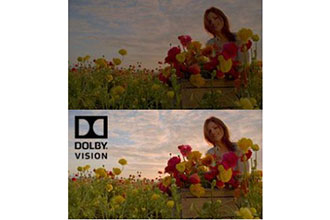CES 2014 Takeaways – Image Quality Continues to Improve at Impressive Rate
 The fact that image quality continues to improve is both expected and startling at the same time. We expect progress, but with image quality already quite good, one has to wonder how much better can it really get? The answer is a lot better and the pace of advancement may even be accelerating.
The fact that image quality continues to improve is both expected and startling at the same time. We expect progress, but with image quality already quite good, one has to wonder how much better can it really get? The answer is a lot better and the pace of advancement may even be accelerating.
I might even go so far as to say we are on the verge of a major step change in the quality of images that are created, distributed and displayed in the home. The evidence is everywhere.
- The 24 frame movie paradigm is being challenged with higher frame rates, more and brighter pixels and ever improving 3D
- A mobile display pixel density war is underway to cram more pixels into a small screen
- Glasses-free 3D displays show improvements every year and may be getting close to acceptability for many applications
- A 4K/UHD feeding frenzy is unfolding to sell more of these TV sets
- Innovative curved displays are showing more immersive images
- Bendable displays are just starting to unleash creative juices for how these products can be used in new and innovative ways
- Body worn displays and devices are ushering in a new era of augmented realty and new ways to blend real world images with data and other information to enhance user experiences
- Advancements in compression, data transfer rates and standards are rapidly removing content sharing and distribution barriers
- Expanded color gamuts from LEDs, phosphors and lasers will come quickly
- Wider dynamic range from capture to display will create much more lifelike images in the near future
And I can go on and on.
But I want to emphasize this last point about wider dynamic range. Based on what I have seen and learned so far, this may have the biggest impact on improving image quality. In a recent Display Daily, there were more details about the Dolby Vision high dynamic range (HDR) solution along with a second article (Dolby Vision Promises Big Step Up in Image Quality) with more basic details. I saw one demonstration of this in the Vizio suite and plan to see more today and tomorrow.
Sony is demonstrating a version of this and another major player here is Technicolor. I visited with them yesterday and recorded a long video explanation of what they are doing, which will be posted next week. But the bottom line is — I was blown away by what they showed me.
They have a camera-to-display solution that is very compelling. First, they developed a method to acquire HDR content that leverages all of the 3D rigs in the market already. They simply use these rigs with one camera having a neutral density filter placed in front of it to capture images that are both under exposed and over exposed. These images are merged to extend the dynamic range of high end cameras from 12-14 stops to a full 20 stop of dynamic range.
This 16-bit data is then converted to floating point and separated into two components — a low resolution, mostly luminance image, and an 8-10 bit image that can be encoded with HEVC or AVC. These two elements, along with some metadata, can be put into a wrapper and distributed to the home. They showed a side by side comparison on their demo display with the original vs. the encoded/decoded version that showed only some minor compromises. This was done for a FHD image and was delivered at only 5 Mbps. Yes, you read that right — HDR images in FHD at 5 Mbps.
The display was equally incredible with 2,000 dynamically dimmable zones and a peak luminance of 4,000 nits. The images were simply stunning. There were night scenes with inky black and fireballs or fireworks with lots of pop. Outdoor scenes were even more impressive with the white of a sheet producing 4,000 nits that gives the image so much pop you just have to go WOW.
I am sure I will be equally impressed with the Dolby solutions. And — both the Dolby and Technicolor approaches expand the color gamut to try to meet the full BT 2020 color spec, which is well beyond rec. 709, sRGB, Adobe, etc.
This is clearly my highlight of CES so far and if these companies can bring HDR to full commercialization, it will take image quality to a much higher level.


